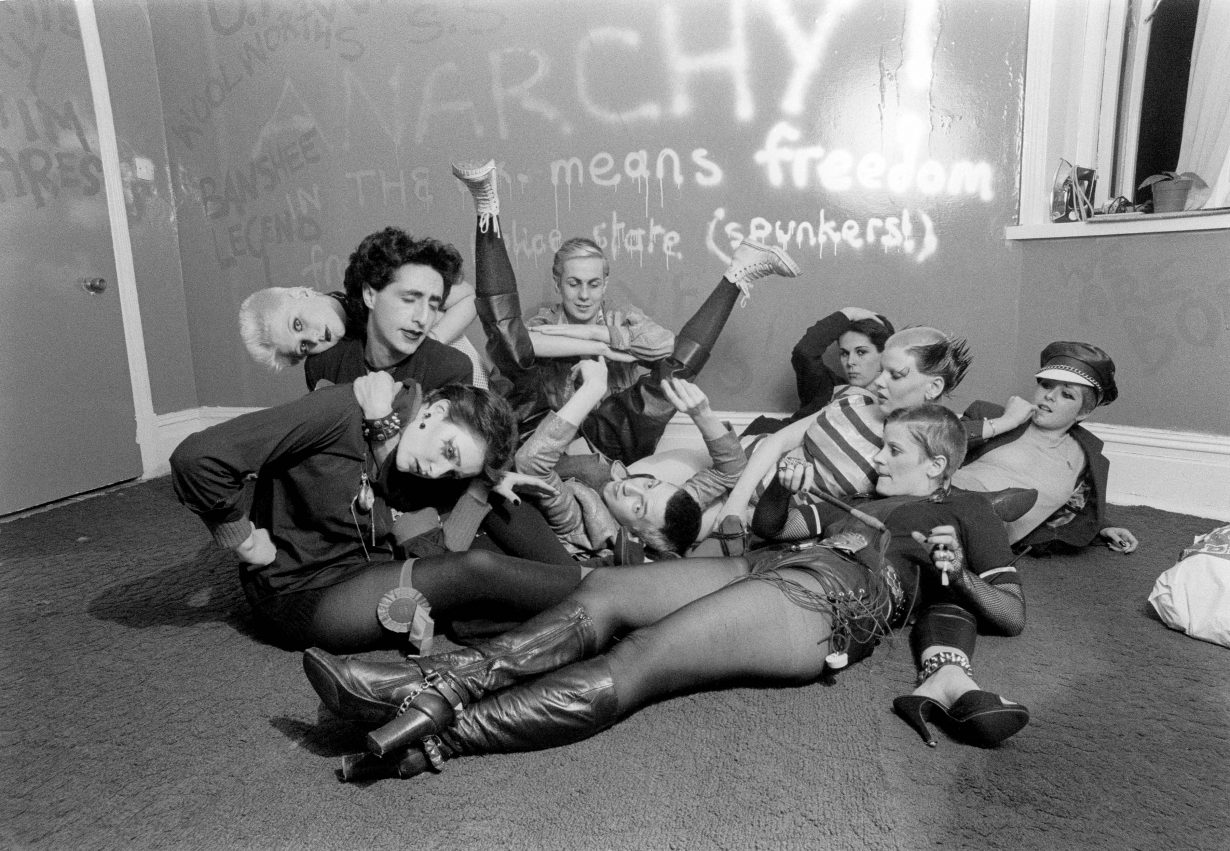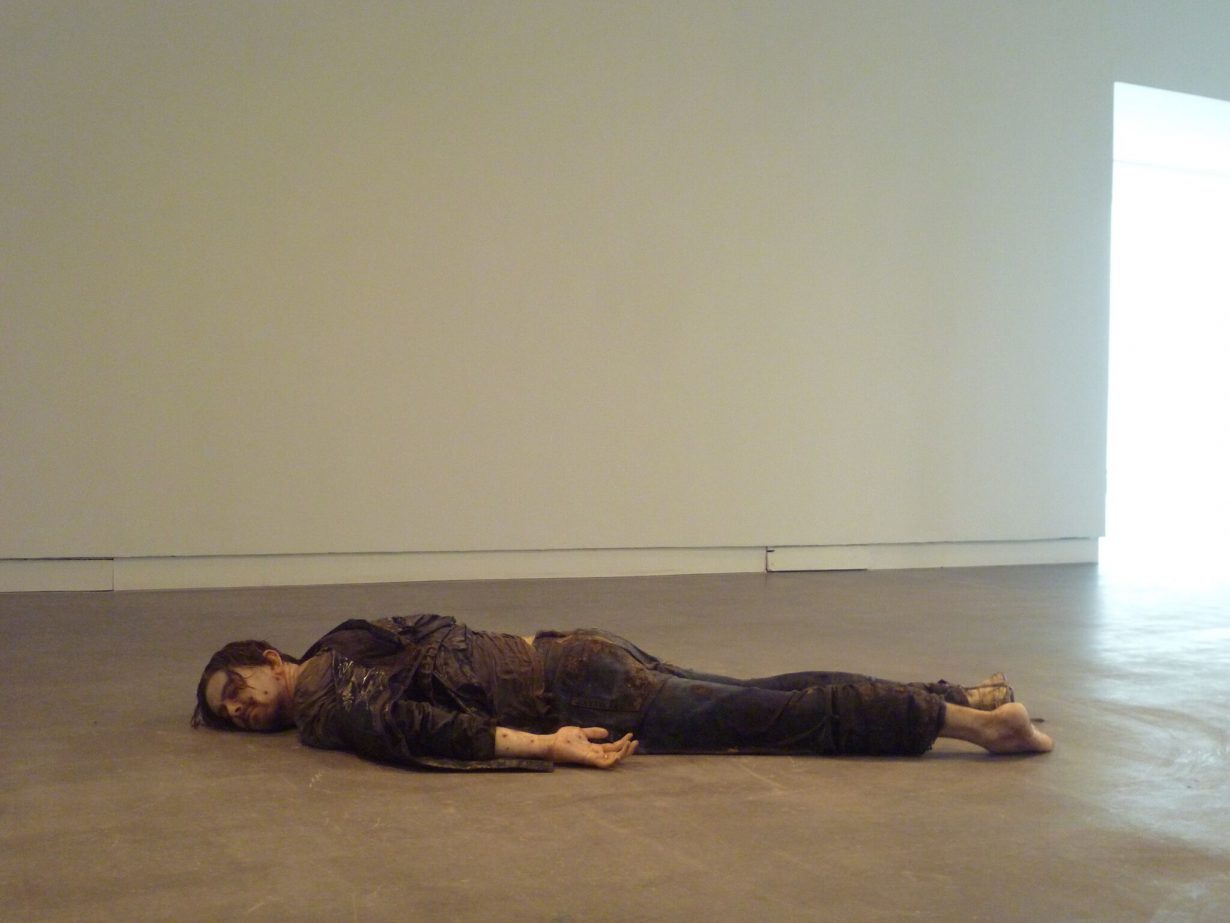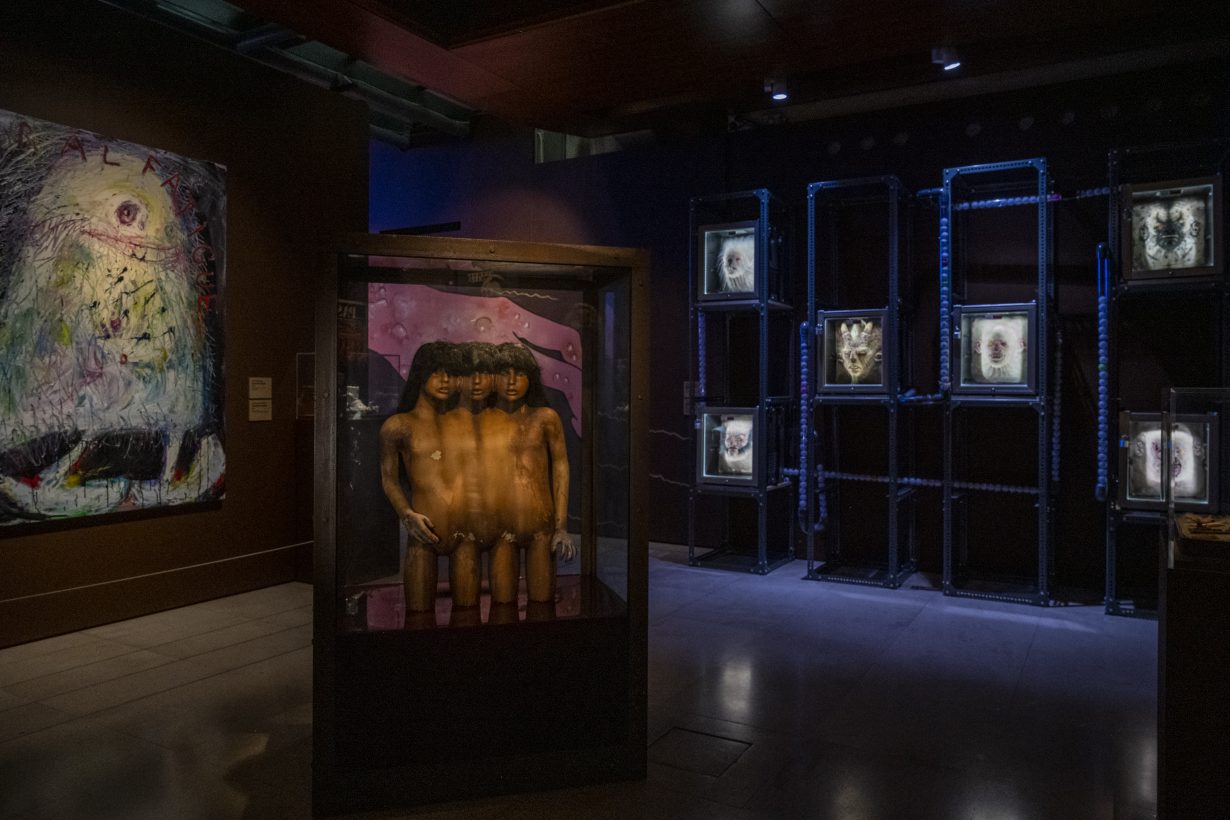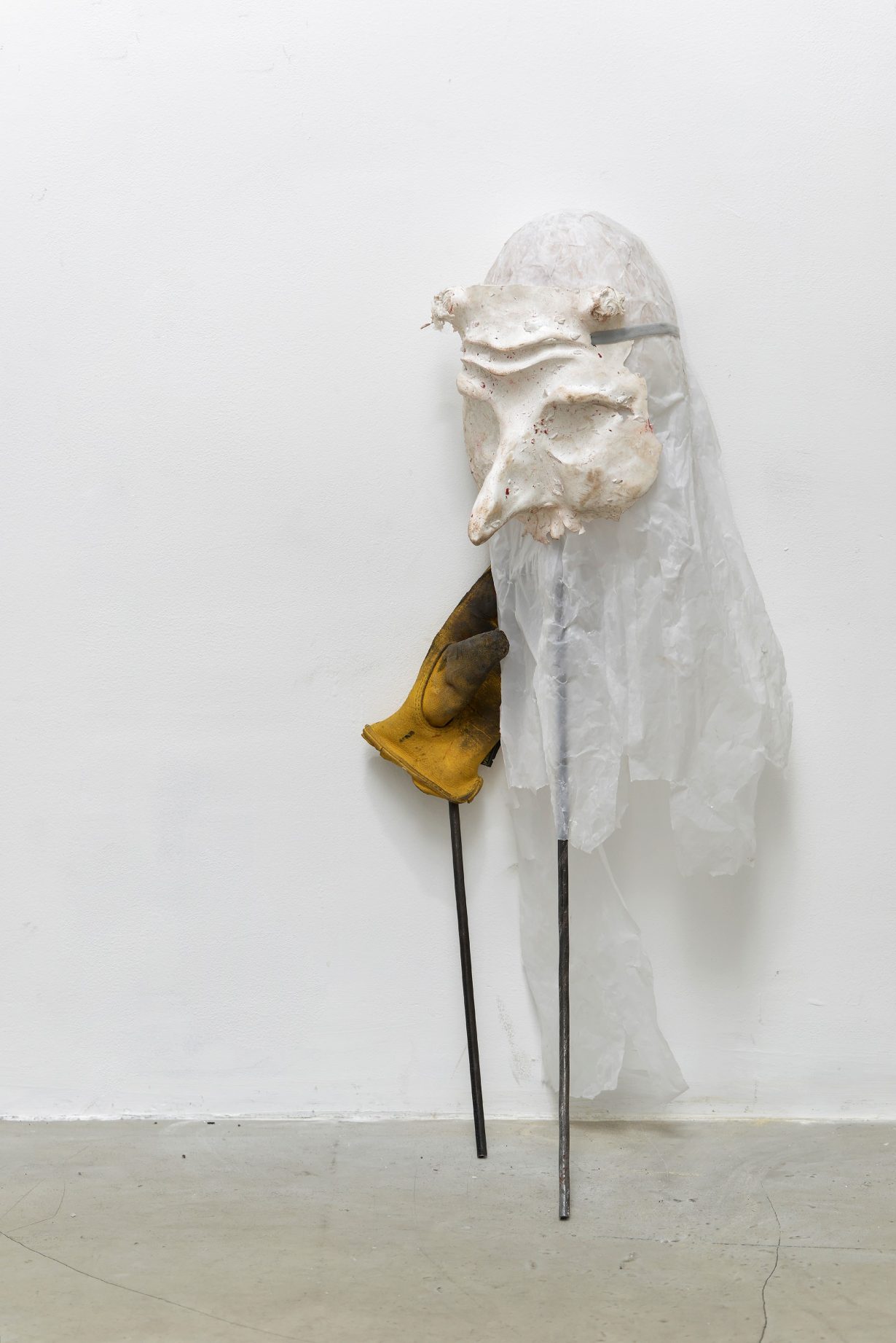Why have the artists charting the country’s fault lines so often turned to the supernatural?
The United Kingdom is a horror story. If you look behind the façades of any of the institutions that make up the country’s increasingly fractious public life, you will find corruption, stitch-ups, state brutality and the stains of imperial atrocities. It all lurks behind our everyday lives – and, as such, our culture – but how explicitly should expressions of urban alienation and social atomisation be taken as manifestations of horror? What does it mean for (say) Stanley Kubrick’s A Clockwork Orange (1971) and Robin Hardy’s The Wicker Man (1973) to emerge from the same time and place? Or for post-punk and Goth to evolve from the same musical subculture?
These are the questions running through The Horror Show! A Twisted Tale of Modern Britain at London’s Somerset House – cocurated by Iain Forsyth, Jane Pollard and Claire Catterall – which functions both as an art exhibition and a partial survey of British counter-culture, focusing on how artists, filmmakers, writers and musicians have used horror to challenge the post-war status quo and search for alternative ways of living. Told as a story in three acts – ‘Monster’, ‘Ghost’ and ‘Witch’ – chronology is not the show’s directive, but is instructive for understanding the works and artefacts as totems of the country’s shifting identity and evolving subcultural underbelly. As such, the historical objects, which range from a grotesque Thatcher puppet (Spitting Image, 1984-96) to a government information leaflet about the potential catastrophe of the millennium bug, add crucial context to the artworks (they need a lot of it, in a society that tries to keep its inequities and injustices out of the public eye). The curators make a convincing case that politicised horror and the gothic shoots through the fabric of postwar British society. Avid listeners to The Fall will not be surprised, for example, by Mark E. Smith’s letter to Rita Tait, head of the Society devoted to late Victorian horror author Arthur Machen, given the reference to the Welsh author and mystic’s 1894 novella The Great God Pan in one of their greatest songs, ‘Leave the Capitol’, 1981.

It’s a thesis that proves particularly effective while looking back at the twentieth century. I especially enjoyed the curators’ summary of the 1990s – ‘Britain’s fault lines are glossed over with empty promises and a Teflon-coated dome, as an airless cultural miasma invades’ – and their keenness to look beyond the Cool Britannia and End of History narratives to writers and artists such as Stewart Home and Jeremy Millar, whose works insisted that the social problems and anxieties of the Thatcher period had not gone away. The characterisation of this period resonates with today’s era of centrist Restoration, when the monsters responsible for austerity and the sprawling military nightmares in Afghanistan and Iraq have reaffirmed their grasp over British politics, and will suppress any serious discussion of their long-term consequences.

The three-decade-long civil war in Northern Ireland and the ‘war on terror’ are intriguing absences within this narrative. One gets the sense that the punk and post-punk period’s interest in the gothic was concerned more with the dark side of mainland urban living, following authors such as JG Ballard and Anthony Burgess – with explicit discussion of the conflict in Ireland left to more obviously left-wing groups such as Gang of Four, The Passage and Stiff Little Fingers (all of which are absent in the exhibition). In The Horror Show!’s turn to the twenty-first century, we see a shift away from both popular music and television as a means of reaching audiences, and towards more spiritual and mystical practices: politics still seeps into the horror, but instead of reaching for high politics or mainstream media, works like Juno Calypso’s film A Dream in Green (2015) or Jenkin van Zyl’s sculpture Six Scintillating Sinners (In Vitro) (2021) instead focus on the human body, and haunt us by transfiguring it.

One powerful exception is Laura Grace Ford’s work. Her graphic zine Savage Messiah, originally published in 2005-2009, used biro drawings and cut-up text to capture the people left without hope, buildings abandoned to ruin and the counter-cultures destroyed in the wake of London’s Thatcherite boom. In this, Ford continues the post-punk and anti-Tory lineages established earlier in the show with Ralph Steadman’s grotesque portraits of Thatcher, front covers of the incendiary 1980s anarchist newspaper Class War and anarcho-punk band Crass’s LP sleeves. Ford’s new work – composed by the artist, and produced and engineered by Stephen Mallinder from Cabaret Voltaire – presents a menacing soundscape: Ford’s monologue demands that listeners confront the alienation induced by a world in which the forces of capital have won and will continue to crush any force that tries to oppose them.
The more recent work on show – most pointedly in the show’s final act – reflects a feminist turn towards astrology, tarot and witchcraft over the last decade. We could read this turn, in part, as a response not just to the collapse of collective political movements that aimed to improve the lives of the masses, documented here in the works dealing with the dark undersides of urban living, but also to the hectoring and often disingenuous New Atheism that bloomed during the war on terror (and has culminated in the debased thought and desperate life of Jordan Peterson). We see this in sculptures and installations by Jesse Darling, Col Self and Tai Shani, as well as in Linder’s The Goddess Who is Permanent as Well as Temporary (2020) – a lightbox near the end of the show depicting a woman with roses sprouting out of her breasts.

Knowing of Linder’s early photomontage works and involvement in the 1970s post-punk scene, then, brings us full circle. Because throughout the show, it’s this historical period that seems the most pivotal to discussions about horror in Britain. To this day, Conservatives try to define the decade as a disaster that only Thatcherism could resolve, while the left argue that Thatcherism itself created a dystopia. In the decades that have followed, artists and writers have attempted to pick up the cultural threads that it terminated. In literature, writers as diverse as David Peace and Alison Rumfitt have explored the darkness behind Britain from the 1970s to the present, with Peace showing the violent webs of conspiracy that lie behind British institutions and shape people’s everyday lives, and Rumfitt using the horror genre, and the device of the haunted house, to drive home the point about Britain’s refusal to discuss its colonial past, its issues with racism and transphobia, or how its ill-gotten wealth came to be so unevenly distributed over the last 50 years. This exhibition makes a compelling case that art has explored – and should continue to explore – the same concerns.
